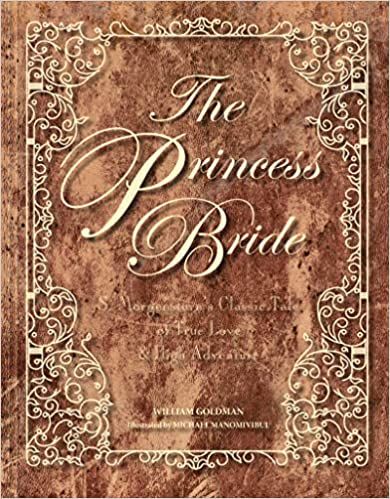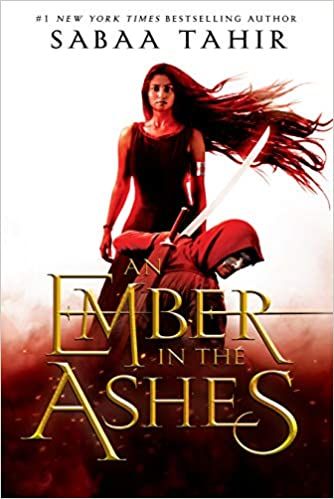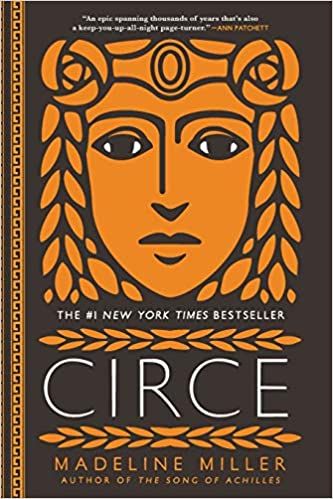23 of the Most Influential Fantasy Books of All Time - Book Riot
Fantasy is a tricky genre to define, as it frequently overlaps with romance, sci-fi, horror, and more. Fantasy, in some form, has always been part of world literature. From One Thousand and One Nights (sometimes called The Arabian Nights), Beowulf, and The Odyssey to other myths and epics, magical and supernatural elements in literature are timeless and universal, but they aren't strictly speaking part of the fantasy genre. Most critics also consider magical realism a separate genre from fantasy, despite some similar elements.
Although I've personally enjoyed many of these books and series, I tried to explain how they were influential in both positive and negative ways and criticism they've received. Also, saying one book helped pave the way for others doesn't necessarily mean one author directly imitated another. More broadly, the earlier book's popularity contributed to an environment where books on similar themes would sell. These books have had major impacts on the fantasy genre and publishing industry — and on pop culture at large. Though no single author, historical period, or culture invented the fantasy genre, I wanted to trace influential examples of fantasy, starting in the 19th century, but focusing on the 20th and 21st centuries.
1800s

Alice's Adventures in Wonderland by Lewis Carroll
Carroll, a mathematician whose real name was Charles Dodgson, published this children's book — usually called Alice in Wonderland — in 1865. It's been translated and adapted many times, and it's never gone out of print. The absurdity and wordplay were extremely influential. A century later, musician Grace Slick wrote "White Rabbit," a hit psychedelic rock song with lyrics inspired by Alice in Wonderland. Some readers think the book satirizes imaginary and irrational numbers, which were then new mathematical concepts. Alice endures partly because it inspires such diverse interpretations. "Down the rabbit hole" is now a common expression for being drawn into something surreal or fascinating.
1900–1950

Peter Pan by J. M. Barrie
Barrie introduced his character Peter Pan, "the boy who wouldn't grow up," in his 1902 novel The Little White Bird. His later stage plays and novels expanded on the iconic characters and the setting, Neverland. It's been adapted into Broadway musicals and several movies. Most versions of the story, especially the 1953 Disney movie, contains racist depictions of Native characters. Despite its problematic aspects, Peter Pan symbolizes innocence and childhood in pop culture. These contradictions make it ripe for reimaginings by diverse writers.

The Sword in the Stone by T.H. White
Loosely based on Thomas Malory's 15th century romance Le Morte D'Arthur, this 1938 novel imagines King Arthur's childhood. Arthur is raised by Sir Ector and nicknamed "Wart." Merlin (spelled Merlyn here) tutors Wart and even turns him into animals. This book later became the first part of White's series, The Once and Future King, completed in 1958. The series was the basis for the 1960 Broadway musical Camelot, and Disney made The Sword in the Stone into an animated movie in 1963. White's version of the King Arthur legend was a major influence on subsequent Arthurian retellings and fantasy in general.
1950s & 1960s

The Lion, the Witch, and the Wardrobe by C. S. Lewis
The first published book (but not the first chronologically) in Lewis's The Chronicles of Narnia, it's a classic example of a portal fantasy. Like many fantasy books after it, it also can be read as a Christian allegory. Lewis also published books on Christian theology. The four Pevensie children venture into the magical land of Narnia and take sides in a battle between good and evil. It's been adapted into TV series, stage plays, and a live-action movie in 2005. J.R.R. Tolkien and Lewis were friends and professors at Oxford and members of the writers group The Inklings. Maria Sachiko Cecire called them "the Oxford school of fantasy literature."

The Lord of the Rings by J.R.R. Tolkien
This high fantasy with extensive world-building set standards and contributed to fantasy's resurgence. Tolkien originally intended it to be published as a single volume. He made maps and invented mythology and languages for his setting, Middle-earth. The trilogy was adapted into an animated film in 1978. In the early 2000s, the live-action movie trilogy brought the story to new generations. LotR and its adaptations played an important role in bringing fantasy into mainstream pop culture. However, Tolkien's fantasy "races," which are more like different species or subspecies, have contributed to racist and antisemitic stereotypes in the genre.

A Wrinkle in Time by Madeleine L'Engle
The first book published in L'Engle's Time Quintet, this 1962 novel follows Meg Murry, an adolescent girl who loves science and goes on a cosmic journey to save her dad. Meg, her little brother Charles Wallace, and her friend Calvin travel through dimensions with the guidance of three guardian angel–like characters. This innovative science fantasy series incorporates theology, philosophy, and scientific ideas that were cutting-edge at the time. Meg's anger, nonconformity, and stubbornness help her immensely. These are often considered negative, inappropriate traits, even today — and especially for girls. Many later SFF authors consider this book a formative influence. It has been adapted into a graphic novel, an opera, and two movies.

Dragonflight by Anne McCaffrey
This was the first book in the Dragonriders of Pern series, begun in 1967. Two of the novellas that were later expanded into this novel made McCaffrey the first woman to win a Hugo Award AND the first woman to win a Nebula Award. Like many other works on this list, it's science fantasy, with elements of both science fiction and fantasy. On the planet Pern, colonized by humans, dragons can communicate telepathically with humans. Dragons who can communicate with humans are more common in fantasy today, but it was groundbreaking for several reasons in the 1960s.

A Wizard of Earthsea by Ursula K. Le Guin
This 1968 novel for young adults follows the education of a young wizard named Ged, also called Sparrowhawk. It's the first book in Le Guin's Earthsea Cycle. The second book, The Tombs of Atuan, may be even more influential. Following criticism, she later regretted making Ged's wizard school all-male. In 2004, she criticized a TV adaptation for whitewashing her protagonist. Le Guin is also on Book Riot's list of most influential sci-fi books. Her works imagined entire worlds, with distinct cultures, governments, religions, and gender roles.
1970s & 1980s

The Princess Bride by William Goldman
This 1973 novel combines romance, comedy, and fantasy. Goldman later adapted his own novel into a screenplay, and the 1987 movie became a cult classic. Both the novel and the movie use a frame narrative, with the narrator reading and commenting on a book by the fictional S. Morgenstern. Today, many readers prefer to skip most of the frame narrative, which is full of digressions and casual sexism. The story holds up overall and has inspired essays, games, coloring books, and more. Like Shrek, a 2001 movie with a similar plot and attitude, it works equally well as a sincere story and as a parody of fairytales.

Kindred by Octavia E. Butler
First published in 1979, this is one of the first major SFF works in the U.S. by a Black woman author. Butler also wrote speculative fiction, but categorized Kindred as a fantasy. The protagonist, Dana, a Black writer with an older white husband, time travels from her present, 1976 California, to 1800s Maryland to visit her own ancestors. The novel was an unprecedented fantasy work that dealt with the intergenerational trauma of enslavement. In 2021, an upcoming TV adaptation was announced. The novel is frequently taught in schools, selected for city-wide reading programs, and cited by other writers as an influence.

Howl's Moving Castle by Diana Wynne Jones
This 1986 novel begins the Howl series. Hayao Miyazaki released a popular animated film adaptation of Howl's Moving Castle in 2004. Today, a young person living with a reclusive wizard or witch is a popular fantasy trope. So are witches and witches as love interests, partly due to this book's success. The author's originality and possible influence on later fantasy is underrated. In 1988, The Lives of Christopher Chant, the fourth book of Jones's Chrestomanci series, featured characters who could become invisible and bind their life force to objects, averting death.
1990s & 2000s

A Game of Thrones by George R.R. Martin
"Winter is coming." The first book of Martin's series A Song of Ice and Fire was published in 1996. It was later adapted into the hit HBO series Game of Thrones, which ran from 2011–19. The book series still is not completed as of early 2022. Watching and reading this was a cultural phenomenon. Many people criticized the graphic violence and lack of diversity in the books and show. The series has had a significant impact on the genre and pop culture in general, inspiring comic books, Funko Pops, coloring books, and games. In 2019, the BBC named it one of the 100 most influential novels.

Twilight by Stephenie Meyer
"Team Edward or Team Jacob?" was a popular question during Twilight's heyday in the 2000s. The YA vampire romance series was a phenomenon. Thanks to Twilight's popularity, bookstores suddenly had entire paranormal YA romance sections — and lots of YA books with love triangles. The series received criticism for romanticizing controlling, dangerous relationships, and some members of the Quileute Tribe criticized how the series depicted their culture.
2010s & 2020s

Who Fears Death by Nnedi Okorafor
This 2010 science fantasy novel is set in a post-apocalyptic version of Sudan. It deals with racial oppression and sexual violence, especially when weaponized together. In 2011, it won the World Fantasy Award. In 2020, Time named it one of the "100 Best Fantasy Books of All Time." It was especially timely and significant, as it was published during the ongoing genocide in Darfur. An HBO adaptation is in development.

A Court of Thorns and Roses by Sarah J. Maas
The first book of this New Adult series starts as a "Beauty and the Beast" retelling and expands into the author's unique take on the Fae and much more. Readers love the strong female characters, but some, including me, have also critiqued the possessive and manipulative male love interests. ACoTaR and Maas's previous series, Throne of Glass, have had a huge influence on the fantasy and romance genres. Both series have been extremely popular, optioned for TV, and made into adult coloring books.

The Fifth Season by N.K. Jemisin
This 2015 novel is the first book of The Broken Earth trilogy. The following year, it became the first novel by a Black author to win the Hugo Award for Best Novel. It's science fantasy, containing both advanced technology and magic. It depicts the racial oppression of orogenes, people who can manipulate tectonic plates, on a planet with an unstable climate. It also explores intergenerational trauma. It has unique, detailed world-building and a much more diverse cast of characters than most fantasies. In 2021, it was optioned for a movie.

An Ember in the Ashes by Sabaa Tahir
Many dystopian YA series, especially The Hunger Games, were extremely popular during the 2000s and '10s. While most of these were sci-fi or speculative fiction, An Ember in the Ashes is a dystopian fantasy. It's from 2015 and the first in the Ember Quartet, inspired by ancient Roman history plus Middle Eastern and South Asian mythology. Laia is such a relatable protagonist partly because she's motivated by love for her family. She shows teens can be courageous and terrified at the same time. Tomi Adeyemi often cites An Ember in the Ashes as an influence on her own writing.

Circe by Madeline Miller
Publishing was already in a retelling boom when Circe was published in 2018, but it paved the way for more retellings of ancient Greek myths particularly. In 2020, I wrote about how Circe makes ancient myths more accessible to readers like me, who never studied ancient Greek. It brings ancient myths to life and depicts immortality as a curse. The ancient Greek gods are often cruel and capricious. One of the biggest strengths of this feminist fantasy novel is restoring agency to a powerful female character who's been historically blamed and maligned as an evil "temptress."

Children of Blood and Bone by Tomi Adeyemi
This 2018 YA fantasy novel is the first part of the Legacy of Orïsha series. It's influenced by West African mythology, including Yoruba language and culture. Zélie, one of the protagonists, is a Maji: one of ten clans oppressed both for their dark skin and their magical abilities. The novel is about the importance of family, friendship, and heritage in the face of oppression. It has been taught in classrooms and optioned for a movie.

Black Sun by Rebecca Roanhorse
The first part of the Between Earth and Sky trilogy, this book was published in 2020. It's an epic, apocalyptic fantasy novel set in a world inspired by pre-Columbian Indigenous cultures. Many readers praised it for worldbuilding not based on European history or myths. NPR listeners picked it as one of their favorite SFF books of the past decade. An upcoming TV series adaptation was announced in late 2021.

The Deep by Rivers Solomon with Daveed Diggs, William Hutson, and Jonathan Snipes
Solomon's 2019 fantasy novella is expanded from the 2017 song "The Deep" by the experimental rap group clipping., so all the writers share writing credit. The song and the novella are examples of Afrofuturism. The novella's protagonist, Yetu, is a wajinru, one of the merfolk who breathe water and descend from enslaved African pregnant people whom slave-owners threw overboard. The mer-people face outside threats to their idyllic, underwater society. This collaborative, multi-genre fantasy work reckons with intergenerational trauma in a unique way.

These Violent Delights by Chloe Gong
This imaginative, historical fantasy set in 1920s Shanghai was published in 2020. It's a Romeo and Juliet retelling, with Roma and Juliette's families heading rival gangs. It's popular on BookTok, partly because it's an example of the enemies to lovers trope. There's something refreshing about two leads who are both dangerous people and admit it, never pretending to be an ideal or safe relationship. The bantering humor, literary and musical references, and clear homages to Shakespeare's characters all helped make the book a huge hit.

Legendborn by Tracy Deonn
The first book of the Legendborn Cycle, this book was published in 2020. The protagonist, Bree, is a 16-year-old Black girl in an early college program at UNC-Chapel Hill. It's a new spin on Arthurian legends with a secret society. Deonn has cited The Dark is Rising by Susan Cooper as one of her influences because it brings ancient mythology to a modern setting. Legendborn won the Coretta Scott King Award/John Steptoe Award, and it's being adapted into a TV show. At the same time, more new series and anthologies are diversifying ancient myths, particularly King Arthur.
Want More Book Recommendations?
Check out our list of influential science fiction, historical fiction, and romance novels.



Comments
Post a Comment